Sanitary ware is a vital component of contemporary bathroom design, merging practical functionality with aesthetic appeal. As consumers increasingly prioritize hygiene and sustainability, the selection process has evolved, necessitating a thoughtful examination of various factors such as material quality, design compatibility, and water efficiency. This discussion will explore the myriad options available, from toilets and basins to innovative technologies that enhance user experience. However, the implications of these choices extend beyond mere aesthetics, influencing both environmental impact and long-term maintenance. What considerations should guide your decisions in this intricate landscape?
Sanitary ware is a critical component of modern bathroom design, embodying both functionality and hygiene. This term encompasses a variety of fixtures and fittings, including toilets, basins, showers, bathtubs, and essential plumbing accessories. The choice of sanitary ware significantly impacts personal hygiene while also contributing to the overall aesthetic of the bathroom. Many consumers are increasingly drawn to eco-friendly materials that promote sustainability in their selections. Current sanitary ware trends reflect a growing demand for eco-friendly options, promoting sustainable materials and water-saving technologies. When considering installation, it is vital to follow best practices to ensure proper functionality and durability. Proper alignment and secure fittings are crucial for preventing leaks and ensuring longevity.
A comprehensive maintenance guide is essential for preserving the integrity of sanitary ware. Regular cleaning with non-abrasive materials helps maintain its appearance and functionality, while timely repairs can prevent larger issues.
Moreover, design inspiration is abundant, with a myriad of styles available to suit diverse tastes, from minimalist to luxurious. By selecting the right sanitary ware, homeowners can create a harmonious balance of style and utility in their bathrooms, ultimately enhancing their living spaces.
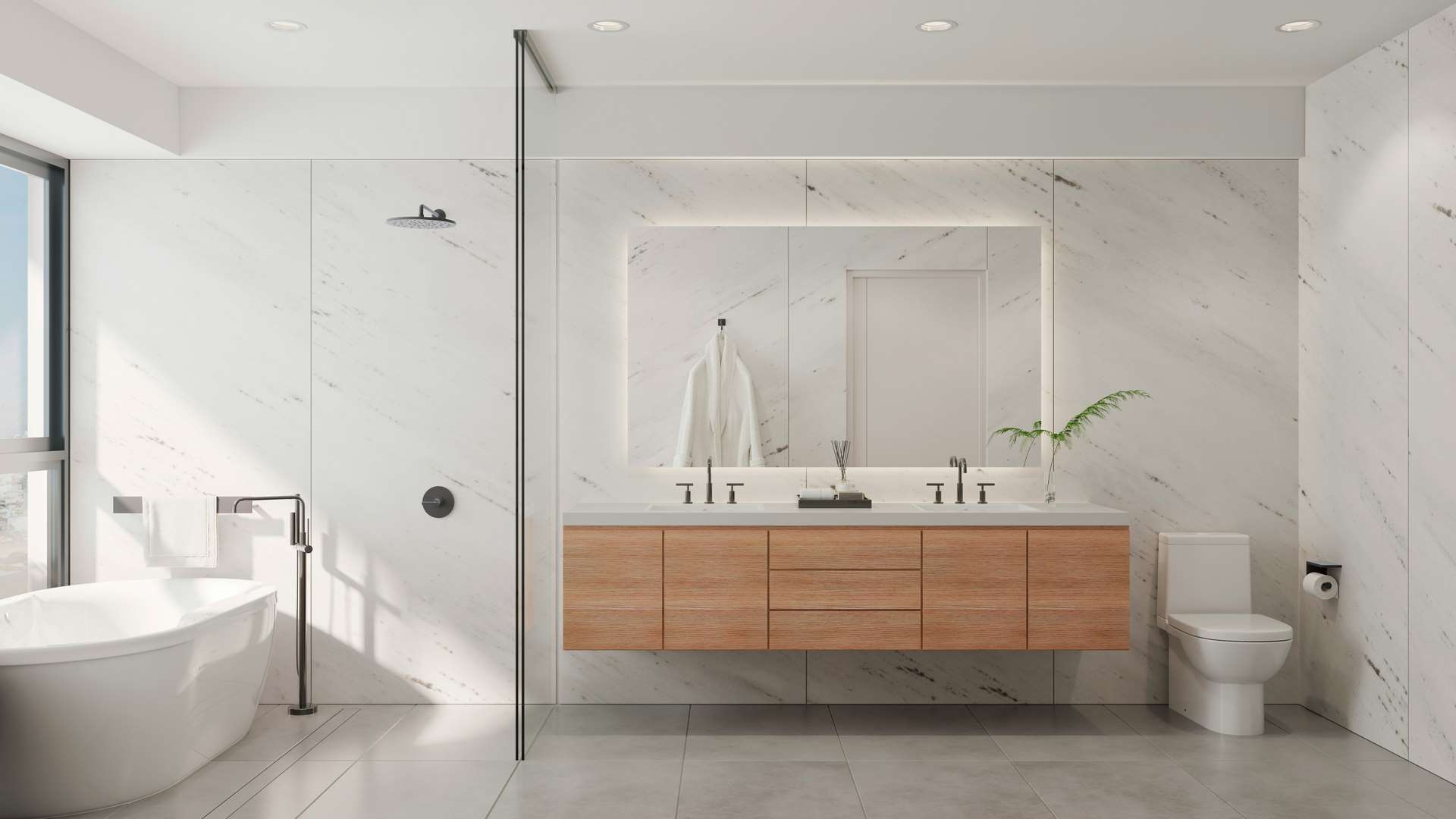
When embarking on the journey to purchase sanitary ware, several critical factors warrant careful consideration to ensure a successful selection that meets both functional and aesthetic needs. Understanding the materials used in sanitary ware is essential, as they can impact durability and maintenance. Sustainability considerations are paramount; opting for eco-friendly materials can significantly reduce environmental impact.
Installation tips should also be reviewed beforehand, ensuring compatibility with existing plumbing and layout. Aesthetic preferences play a vital role in creating a cohesive bathroom design, and selecting styles that align with personal taste is crucial. Additionally, hygiene factors must be prioritized, as certain materials and designs are easier to clean and maintain.
Lastly, budget constraints will influence the final decision; understanding the costs associated with various options is fundamental. The table below summarizes key considerations:
| Factor | Importance Level | Example Consideration |
|---|---|---|
| Material Quality | High | Ceramic vs. Porcelain |
| Aesthetic Preferences | Medium | Modern vs. Classic Styles |
| Installation Ease | High | Compatibility with plumbing |
Evaluating these factors will help ensure a well-informed purchase that enhances your bathroom's functionality and beauty.
The classification of sanitary ware encompasses a range of essential fixtures, each serving specific functions in modern bathrooms. Key types include toilets, basins, bidets, urinals, and bathtubs, which collectively contribute to hygiene, comfort, and aesthetic appeal. Understanding the characteristics and applications of each type is crucial for effective selection and design in sanitary environments. Additionally, a comprehensive selection, including core categories of sanitary items, is vital for achieving both functionality and aesthetic harmony in bathroom spaces.
Toilets represent a critical component of sanitary ware, with various designs catering to diverse functional and aesthetic needs. Key types include wall hung toilets, which offer a modern, space-saving solution; back-to-wall toilets, which provide easy cleaning and a streamlined appearance; and close coupled toilets, known for their traditional design. Additionally, smart toilets are gaining popularity for their advanced technology features, including smart sanitary ware that enhances user experience, while floor-standing toilets remain a classic choice for many residential and commercial settings.
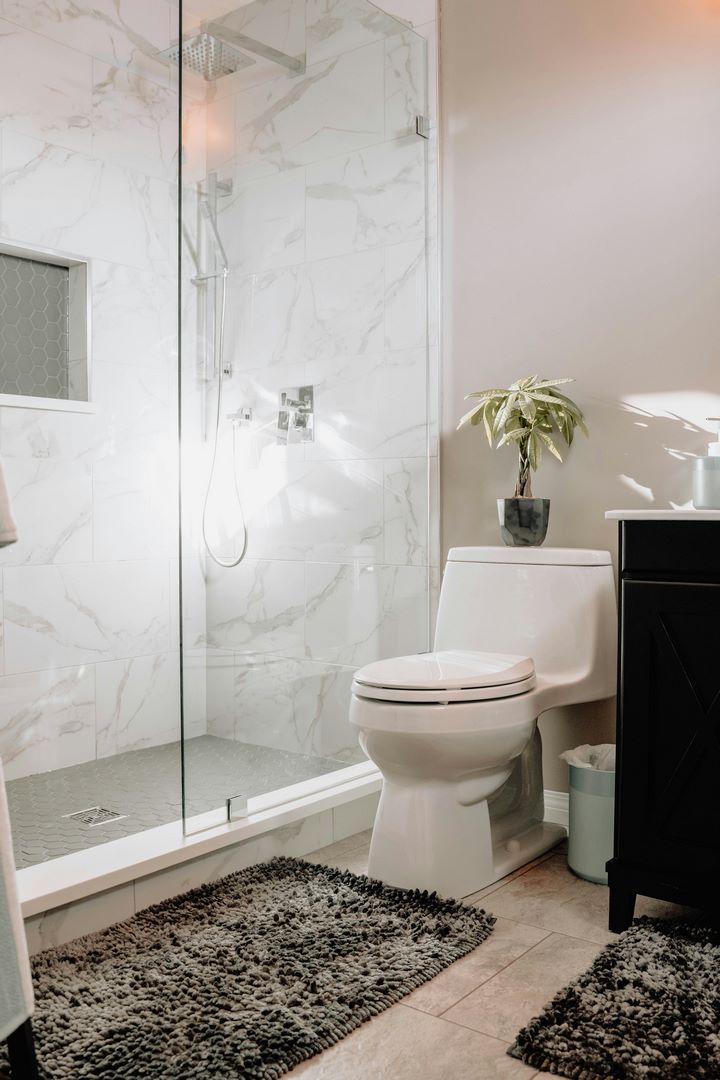
Hanging elegantly on the wall, wall hung toilets represent a modern solution in sanitary ware that optimizes space and enhances aesthetic appeal. Their hygienic installation minimizes floor contact, facilitating easy cleaning and maintenance. These toilets are part of a growing trend towards minimalist and space-saving designs, promoting both functionality and style in compact environments. With a space-saving design, these toilets offer modern aesthetics while promoting water efficiency. For optimal performance, regular maintenance tips include checking the flushing mechanism and ensuring secure wall brackets.
Back-to-wall toilets seamlessly integrate functionality and design, offering a contemporary solution for modern bathrooms. Concealing the cistern within the wall optimizes space and aligns with current design trends. For effective installation and maintenance, consider eco-friendly options. Below is a comparison of various back-to-wall toilet features.
| Type | Installation Tips | Maintenance Advice |
|---|---|---|
| Standard Model | Ensure wall support | Regularly check seals |
| Compact Design | Verify space availability | Clean with non-abrasive solutions |
| Eco-Friendly Unit | Use dual flush systems | Inspect for leaks |
| Designer Style | Consult professionals | Follow manufacturer guidelines |
Close coupled toilets represent a popular choice in modern bathroom design, characterized by their compact configuration where the cistern is mounted directly on the toilet bowl. These models not only optimize bathroom space but also comply with sustainable and efficient bathroom solutions, appealing to eco-conscious consumers. Their benefits include:
These features align with current toilet design trends, making close coupled models both functional and stylish.
In today's technologically advanced world, smart toilets have emerged as a revolutionary addition to modern sanitary ware, combining functionality with cutting-edge features. These toilets offer enhanced user experience through smart toilet technology, including heated seats, adjustable water temperatures, and automatic flushing. Smart toilet installation requires professional expertise, while smart toilet maintenance ensures longevity. Below are key aspects of smart toilets.
| Feature | Benefits | Maintenance |
|---|---|---|
| Heated Seats | Comfort and warmth | Regular cleaning |
| Automatic Flush | Hygiene and convenience | Check sensors |
| Touchless Operation | Reduced germ contact | Battery replacements |
Floor-standing toilets represent a traditional yet enduring choice in the realm of sanitary ware, characterized by their direct installation on the floor. They offer stability but occupy more floor space. Key considerations include the importance of selecting high-quality materials, like brass and stainless steel bodies, for long-term reliability and performance. Installation tips for proper alignment, maintenance advice for optimal functionality, and design options that enhance aesthetics are essential aspects to consider.
Additionally, considerations around water efficiency and comfort features can greatly impact user experience and satisfaction.
Corner toilets are an innovative solution for optimizing space in small bathrooms, designed to fit seamlessly into angled corners. They offer significant corner toilet benefits, such as maximizing floor space while adhering to quality standards and certifications for safety and reliability. Available in various corner toilet styles, installation requires careful planning. Common corner toilet materials include ceramic and plastic, ensuring durability. Regular corner toilet maintenance involves cleaning and checking for leaks, maintaining functionality and hygiene.
Compact toilets represent a practical choice for bathrooms where space is at a premium, such as powder rooms or smaller residential units. These toilets offer:
For optimal use, consider installation tips and follow maintenance advice to ensure longevity and performance.
One-piece toilets offer a streamlined solution for modern bathrooms, combining the tank and bowl into a single, cohesive unit. This design trend aligns with the broader movement towards minimalist aesthetics, enhancing the overall look of contemporary spaces. For optimal installation, ensure a level floor and secure connections. Maintenance advice includes regular checks for leaks and using appropriate cleaning products to maintain surface integrity. Design trends favor minimalist aesthetics, while water efficiency remains paramount, promoting eco-friendly usage in contemporary settings.
Two-piece toilets represent a traditional yet versatile option in the realm of sanitary ware, distinguished by their separate tank and bowl design. Their adaptability allows for various toilet designs, featuring advanced flushing technology and improved water efficiency. Additionally, opting for models with eco-friendly features, such as low-flow mechanisms, can significantly reduce water consumption and utility costs, aligning with the trend towards eco-friendly features and water-saving technologies.
Basins are a fundamental component of sanitary ware, offering various designs to meet both functional and aesthetic needs. The primary types include pedestal basins, wall-mounted basins, vessel basins, undermount basins, and corner basins, each serving distinct spatial and practical requirements. Understanding the characteristics and applications of each basin type is essential for effective bathroom design and user satisfaction.
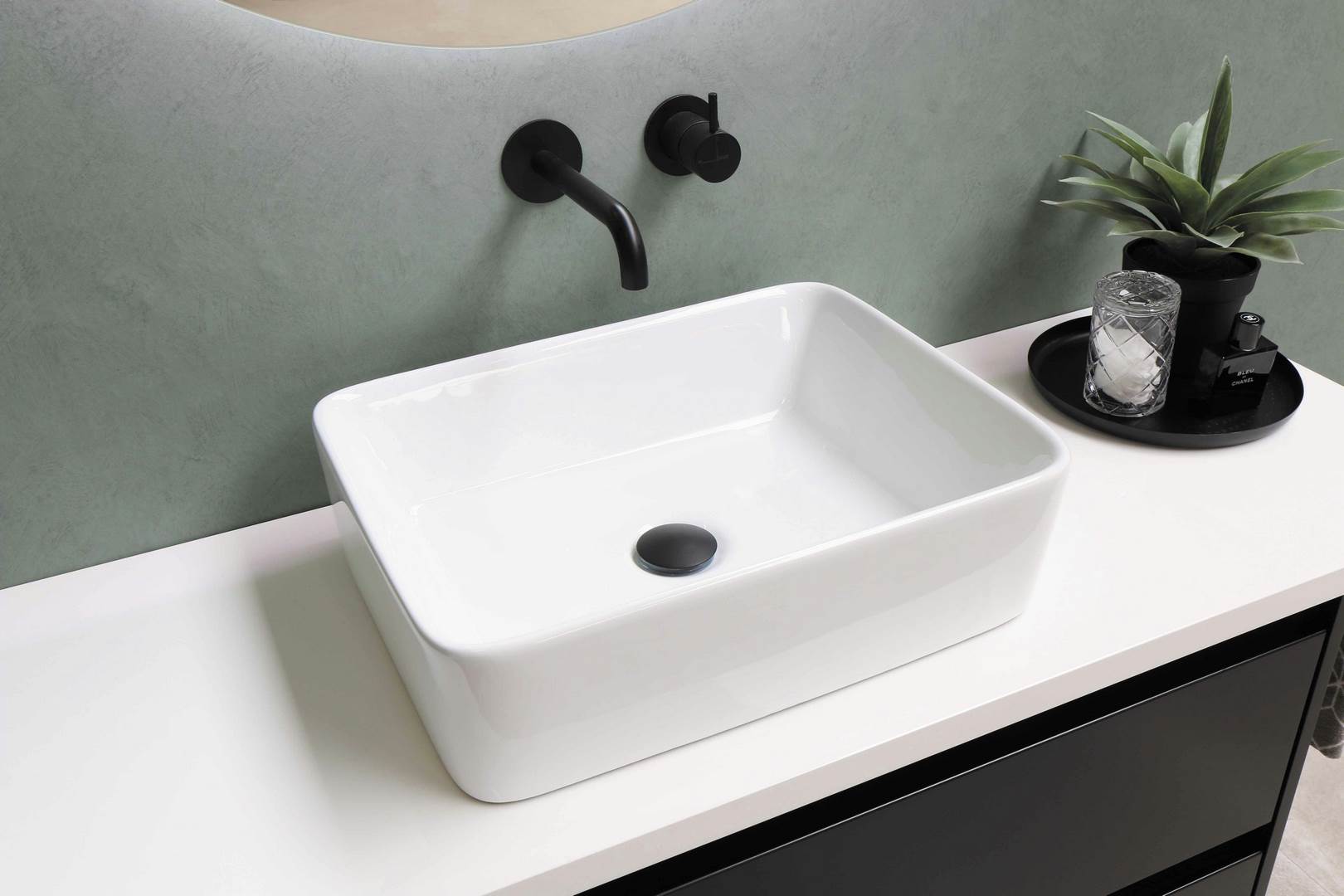
Pedestal basins represent a classic choice in sanitary ware, characterized by their elegant design and functional integrity. Available in various styles and materials, these basins offer numerous advantages for modern bathrooms. Key considerations include:
These features make pedestal basins a timeless option.
Wall mounted basins are a modern and space-efficient solution in the realm of sanitary ware, designed to be affixed directly to the wall without any supporting pedestal or cabinetry beneath. These basins come in various material options, enabling diverse modern designs. For optimal installation, ensure proper wall reinforcement. Maintenance advice includes regular cleaning and checking for secure fittings, enhancing long-term durability and functionality.
Vessel basins represent a stylish and contemporary alternative to traditional sink designs, characterized by their distinctive placement atop the vanity counter. Available in various vessel basin materials and styles, they enhance aesthetic appeal while requiring specific maintenance. Key considerations include:
These factors ensure optimal functionality and longevity in modern bathrooms.
Undermount basins are a popular choice in modern bathroom design, offering a seamless integration with the countertop surface. When selecting undermount basins, consider design trends, various material choices, and cost considerations. Proper installation tips and a thorough maintenance guide will ensure longevity and aesthetic appeal.
| Feature | Consideration | Importance |
|---|---|---|
| Material Choices | Porcelain, Glass | Affects durability |
| Installation Tips | Professional help | Ensures alignment |
| Maintenance Guide | Regular cleaning | Prevents staining |
Maximizing the use of limited bathroom space, corner basins are an innovative solution for smaller areas while maintaining functionality and style. These space-saving designs offer various material options and align with contemporary style trends. Installation tips include ensuring proper plumbing alignment, while consistent maintenance advice ensures longevity. Consider the following:
Countertop basins have gained popularity in modern bathroom design, offering a stylish and functional solution for various spaces. Available in diverse countertop basin materials such as ceramic, glass, and stone, these fixtures come in various countertop basin styles. Proper countertop basin installation ensures stability, while regular countertop basin maintenance keeps them pristine. Additionally, countertop basin accessories enhance functionality and aesthetics, making them a versatile choice for any bathroom.
Bidets represent a diverse category of sanitary ware, encompassing various designs and functionalities to enhance personal hygiene. Traditional bidets, add-on bidets, bidet seats, and advanced models like the Toto Washlet each offer unique features tailored to different user preferences and bathroom configurations. Understanding the distinctions between these types is essential for making informed decisions regarding installation and usage in modern sanitary environments.
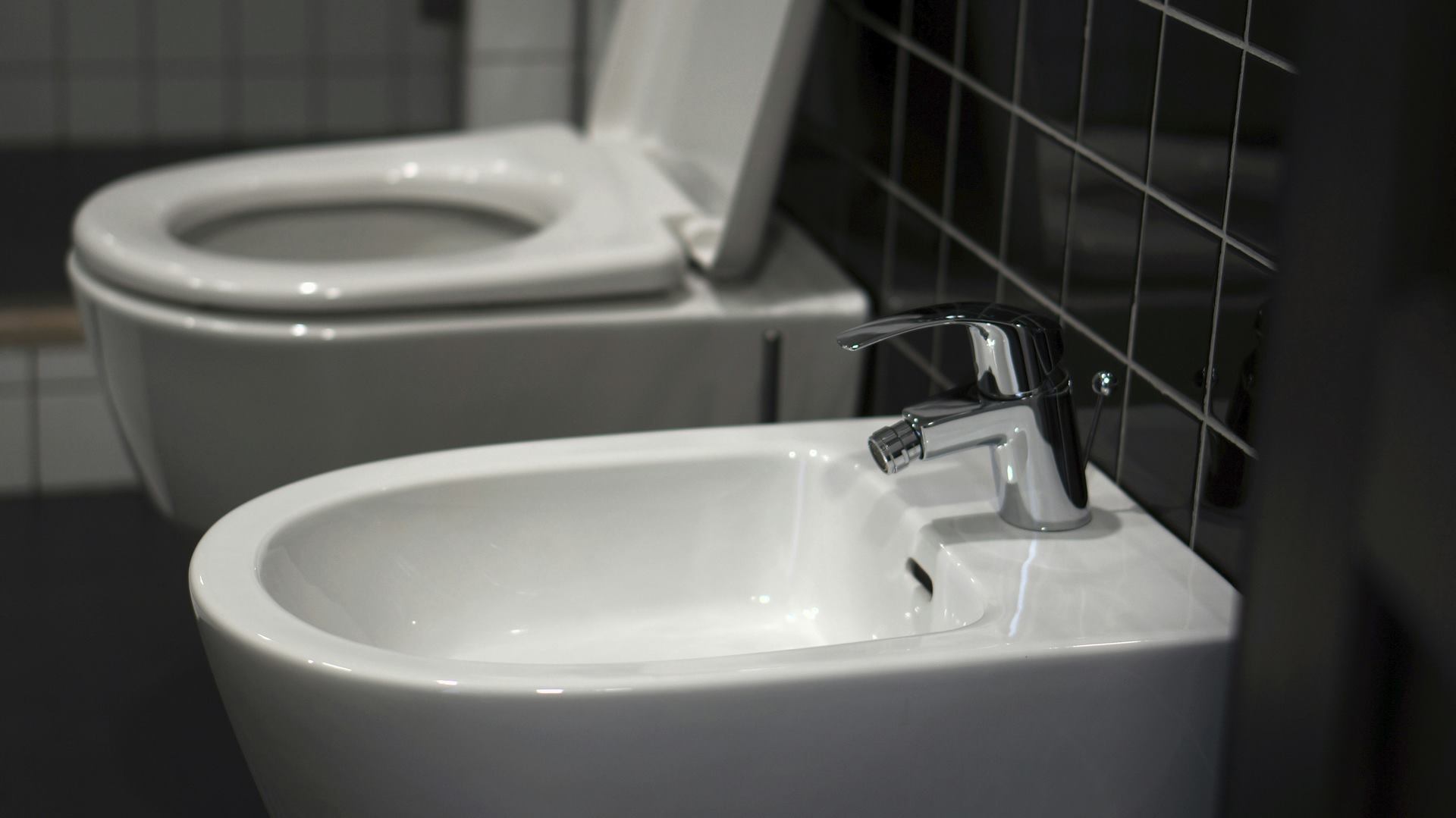
A traditional bidet is a specialized fixture designed for personal hygiene, typically installed in close proximity to a toilet. These freestanding units offer numerous advantages:
Understanding bidet installation is crucial for maximizing bidet benefits and ensuring optimal functionality in modern bathrooms.
In modern sanitary ware design, add-on bidets have gained popularity as a practical solution for enhancing personal hygiene without requiring the installation of a separate fixture. These units offer eco-friendly options for water usage and are designed with contemporary aesthetics. Proper installation tips and maintenance practices are essential for optimal performance, while user experiences highlight their convenience and alignment with evolving design trends.
| Feature | Description |
|---|---|
| Eco-Friendly Options | Reduced water consumption |
| Installation Tips | Easy attachment to toilets |
| Maintenance Practices | Regular cleaning required |
| Design Trends | Sleek, minimalist styles |
| User Experiences | Enhanced cleanliness and comfort |
Enhancing bathroom hygiene through the use of bidet seats has become increasingly popular among homeowners seeking efficient and space-saving solutions. Key considerations include:
User reviews and cost comparison are also crucial for informed purchasing decisions.
Bidet seats have revolutionized modern bathroom hygiene, and among the most prominent options available is the Toto washlet. Featuring advanced smart technology, Toto offers adjustable water pressure, temperature, and positions, enhancing user experience significantly. The washlet benefits include improved hygiene practices and personal comfort, making it a superior choice for discerning consumers seeking to elevate their bathroom sanitation standards.
Urinals are a critical component of sanitary ware, designed to enhance hygiene and optimize space in restrooms. Various types, including wall-hung, floor-standing, waterless, divided, and touchless urinals, offer distinct advantages and applications depending on the setting and user requirements. Understanding the characteristics and functionalities of these urinal types is essential for selecting the most appropriate option for a given environment.
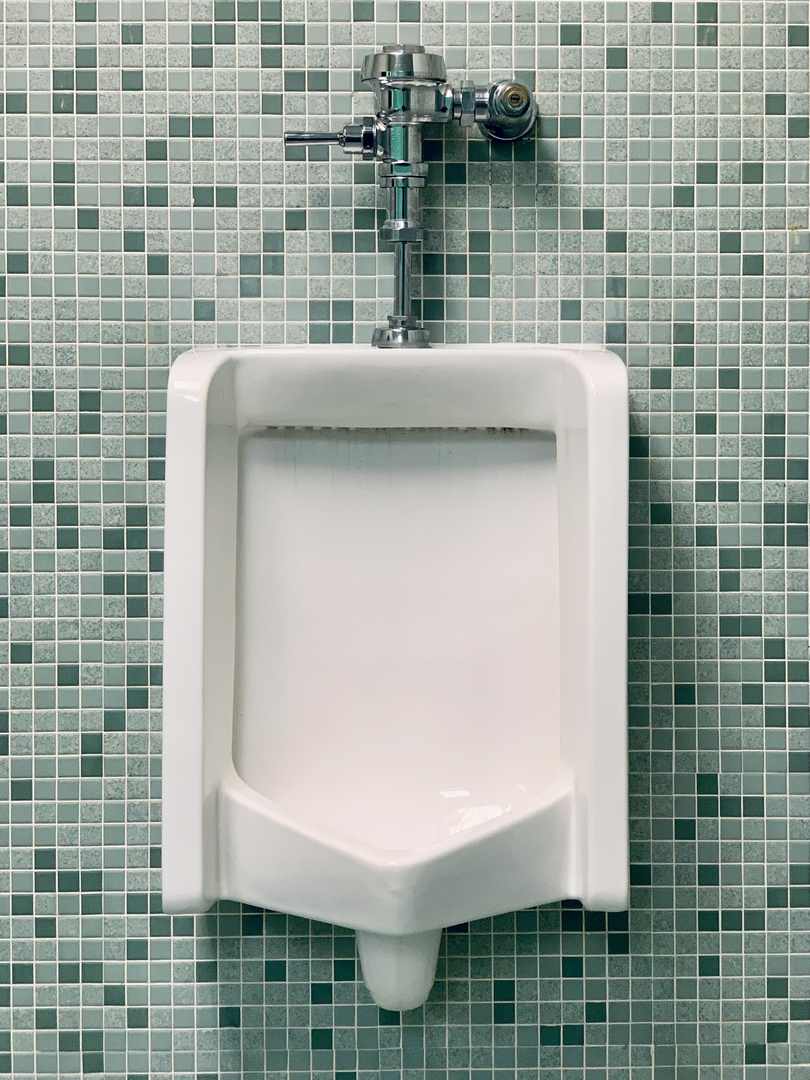
While various types of sanitary ware serve distinct purposes in modern restrooms, wall-hung urinals stand out for their space-saving design and hygienic advantages. Key considerations include:
These features promote water conservation and incorporate accessibility features, making them an ideal choice for both commercial and residential applications.
Although often overshadowed by their wall-hung counterparts, floor-standing urinals play a vital role in restroom design, particularly in high-traffic environments. Current design trends favor durable materials that enhance user preferences and optimize space. Installation tips include ensuring proper drainage and accessibility, while maintenance advice emphasizes regular cleaning to prevent buildup. Ultimately, these urinals provide a practical solution to modern sanitary ware needs.
Floor-standing urinals have long been a staple in restroom design, but the introduction of waterless urinals represents a significant advancement in sanitary ware technology. These eco-friendly solutions utilize a liquid sealant for effective odor control, promoting water conservation.
Divided urinals have emerged as a practical solution in restroom design, offering enhanced privacy for users through strategically placed partitions between units. These installations not only provide privacy benefits but also cater to user preferences. When considering design aesthetics, ensure partitions complement the overall restroom theme. Maintenance guidelines emphasize regular cleaning, while installation tips suggest proper spacing for optimal functionality and comfort.
As restroom design increasingly prioritizes hygiene and user convenience, touchless urinals have gained prominence due to their sensor-based flushing mechanisms. While offering significant hygiene benefits, these units present maintenance challenges that must be addressed. Key considerations include:
Bathtubs are a fundamental component of bathroom design, offering both functionality and aesthetic appeal. Various types of bathtubs, including freestanding, corner, drop-in, undermount, and alcove models, cater to diverse spatial requirements and user preferences. Each type presents unique installation considerations and design attributes, making it essential to evaluate their characteristics in relation to overall bathroom layout and user experience.
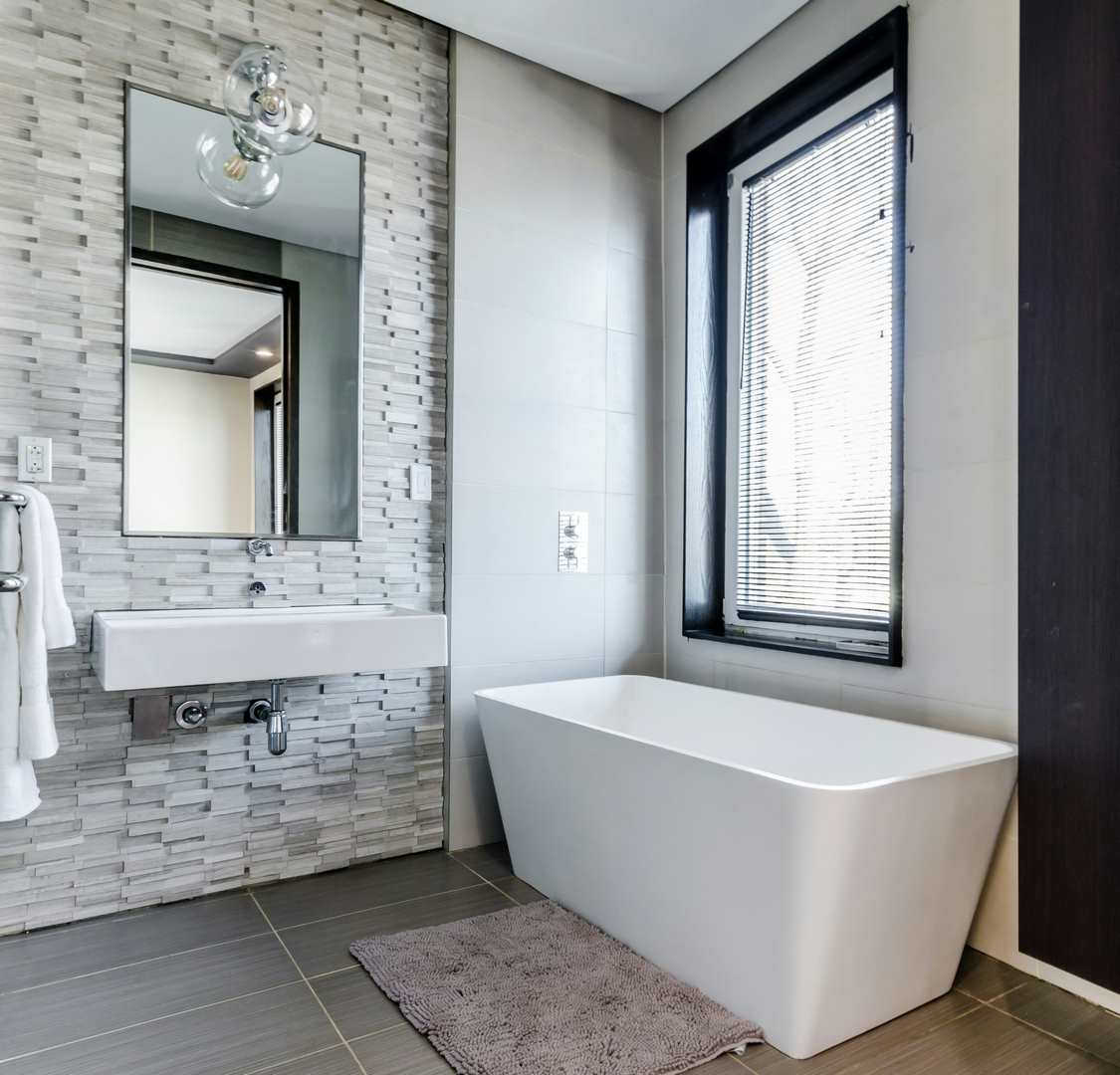
What makes freestanding bathtubs a popular choice in modern bathroom design? Their versatility and aesthetic appeal allow for optimal space utilization. Key considerations include:
These elements contribute to their growing popularity.
Frequently chosen for their space-saving capabilities, corner bathtubs are designed to fit snugly into the corners of bathrooms, making them an ideal solution for maximizing layout efficiency. Their unusual shapes complement various aesthetic styles.
| Feature | Details |
|---|---|
| Material Choices | Acrylic, Fiberglass |
| Installation Tips | Leveling is crucial |
| Maintenance Advice | Regular cleaning needed |
| Aesthetic Styles | Modern, Traditional |
| Space Saving Designs | Optimize corner use |
When considering options for bathroom design, drop-in bathtubs emerge as a versatile choice that combines functionality with aesthetic appeal. Key aspects to consider include:
Popular brands offer modern designs to enhance any bathroom space.
Undermount bathtubs are increasingly chosen for modern bathroom designs due to their seamless integration with the surrounding countertop, which allows for a streamlined appearance and facilitates easier cleaning. Common bathtub materials include acrylic and cast iron, each requiring specific installation tips. Consider space limitations and design styles when selecting an undermount tub, and utilize appropriate cleaning techniques to maintain its aesthetic and functionality.
Alcove bathtubs are often a preferred choice for homeowners seeking efficient use of space in smaller bathrooms, as they are designed to fit snugly within a three-walled recess. Key considerations include:
Regular maintenance advice enhances longevity and performance.
Shower trays and enclosures are essential components of modern bathroom design, offering both functionality and aesthetic appeal. Various options, including shower stalls, walk-in showers, and curved shower walls, cater to diverse spatial and stylistic preferences. Additionally, glass shower doors and screens enhance the visual openness of the space while providing a barrier against water leakage.
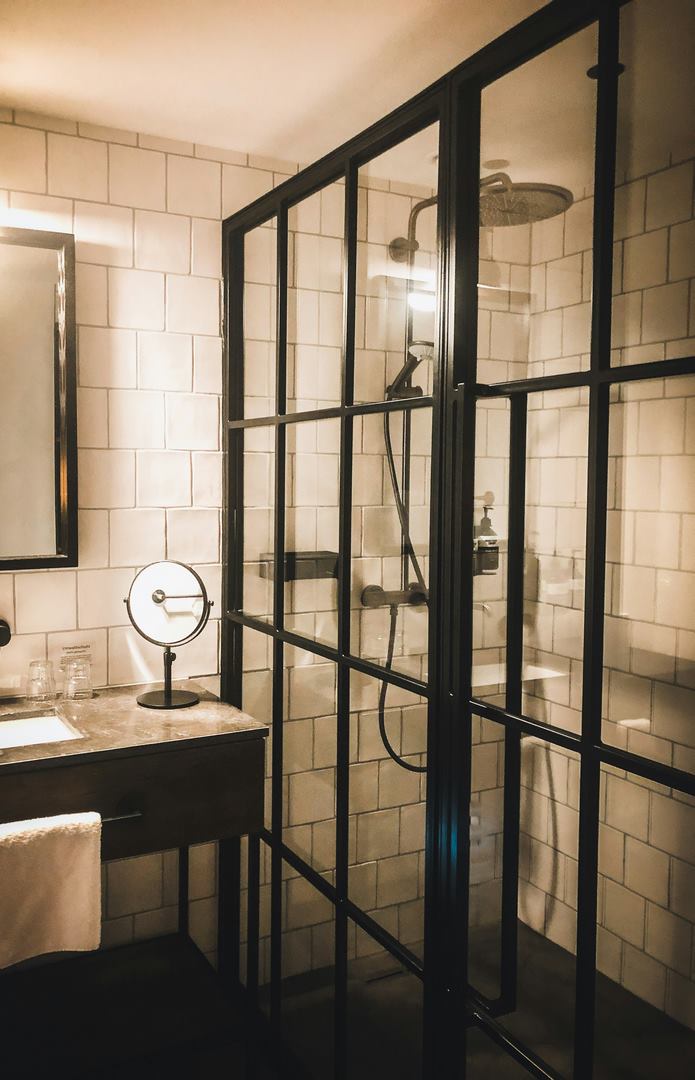
When selecting sanitary ware for modern bathrooms, the choice of shower trays plays a crucial role in both functionality and design. Consider the following aspects:
Adhering to effective maintenance practices enhances longevity and performance.
In the context of modern bathroom design, shower stalls represent a practical alternative to traditional shower trays, particularly in spaces where maximizing efficiency is paramount. These box-like units facilitate space-saving solutions and align with contemporary shower design trends. To enhance water efficiency, careful selection of materials is essential. Installation tips include ensuring proper sealing and drainage for optimal performance and durability.
Walk-in showers have emerged as a popular choice in modern bathroom design, offering a seamless and spacious bathing experience. Key considerations include:
Adopting these design trends and maintenance advice contributes to functionality and aesthetic appeal in your bathroom space.
How can the integration of curved shower walls transform the aesthetic and functional aspects of a bathroom? Curved designs reflect current shower design trends, offering a seamless look with glass or stone panels that enhance bathroom aesthetics. These installations provide glass panel advantages, such as improved light flow, while also incorporating water efficiency solutions. Maintenance tips include regular cleaning to preserve clarity and prevent buildup.
While selecting appropriate sanitary ware is crucial for optimizing bathroom functionality, glass shower doors and screens stand out as an elegant solution for both aesthetics and practicality. They offer effective water containment solutions while enhancing the space's visual appeal. Key considerations include:
Shower panels serve as an efficient and aesthetically pleasing solution for modern bathrooms, particularly due to their prefabricated modular design that facilitates quick installation. The benefits include low maintenance and versatile designs, with materials ranging from acrylic to glass. Proper installation ensures durability, while regular maintenance enhances longevity. Below is a summary of key aspects.
| Aspect | Description | Benefits |
|---|---|---|
| Shower Panel Materials | Acrylic, glass, ceramic | Durability, aesthetics |
| Shower Panel Designs | Sleek, modern, customizable | Versatility, style |
| Shower Panel Maintenance | Easy cleaning, resistant finishes | Cost-effective, longevity |
A well-equipped bathroom relies on an array of essential accessories that extend beyond the primary sanitaryware installations. These accessories not only enhance functionality but also contribute to the overall aesthetic appeal of the space. Thoughtful selection of bathroom accessories is critical in achieving a harmonious design.
Key bathroom accessories include:
When considering bathroom accessories, it is important to stay abreast of style trends and opt for eco-friendly options that align with sustainable practices. Additionally, implementing maintenance tips ensures longevity and cleanliness of these fixtures. Regular care will prevent wear and keep the accessories looking their best. Ultimately, a well-curated selection of bathroom accessories enhances the user experience, making the space not only functional but also inviting and stylish.
Faucets and mixers are critical components of sanitary ware, offering a range of functionalities and design options. Key distinctions include single handle versus centerset configurations, as well as wall-mounted versus deck-mounted installations, each catering to specific user needs and aesthetic preferences. Additionally, advancements such as sensor faucets and pull-out spouts enhance usability and efficiency, making them valuable considerations in modern plumbing design.
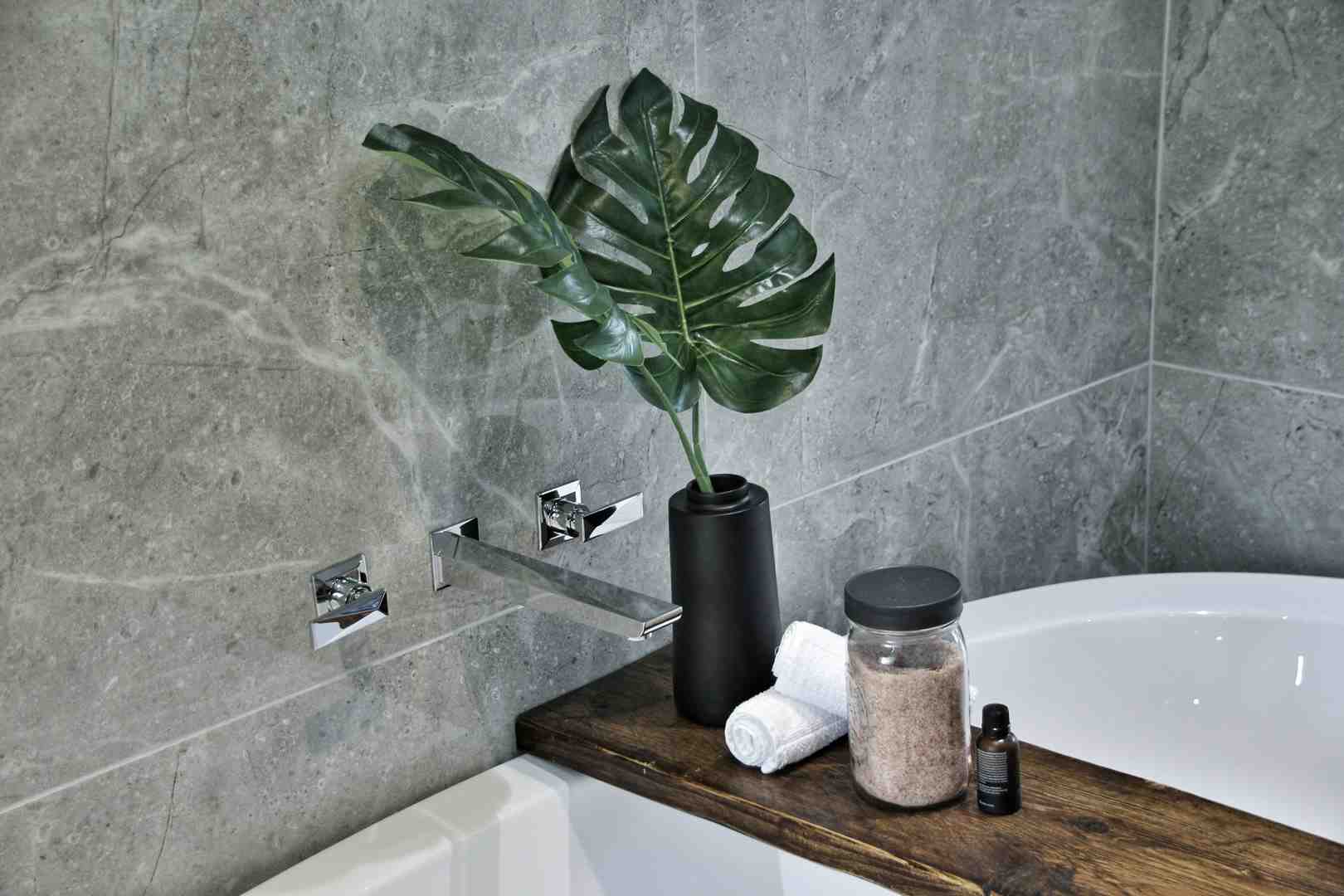
Choosing between single handle and centerset faucets is essential for optimizing both functionality and aesthetics in a bathroom or kitchen.
Consider faucet materials and reputable faucet brands for durability and style.
When considering faucet options, the choice between wall-mounted and deck-mounted configurations represents a significant factor in both functionality and design. Wall-mounted faucets offer unique design aesthetics and save counter space, while deck-mounted faucets provide easier installation methods. Plumbing considerations vary, as wall-mounted installations may require more extensive work. Regular maintenance tips include checking for leaks, ensuring proper sealing, and cleaning fixtures to prolong lifespan.
In recent years, the rise of sensor faucets has transformed the landscape of sanitary ware, offering enhanced functionality and convenience for both residential and commercial applications. These touchless, motion-activated fixtures incorporate advanced sensor technology, promoting water conservation.
Pull-out spouts have become an essential feature in modern sanitary ware, particularly in the realm of faucets and mixers, due to their versatility and practical design. The pull-out spout benefits include enhanced cleaning efficiency and user experience feedback highlighting ease of use. Their seamless kitchen design integration promotes aesthetic appeal, while maintenance guidelines and water conservation tips ensure sustainable and functional usage.
Flush tanks and mechanisms are critical components in the functionality and efficiency of sanitary ware. Various systems, including gravity flush, dual flush, pressure-assisted flush, elongated flush buttons, and automatic sensor flush, each offer distinct advantages in terms of water conservation and user convenience. Understanding these mechanisms is essential for selecting the appropriate type of flush system for both residential and commercial applications.
How does the gravity flush mechanism function in modern sanitary ware? Gravity flush systems utilize the force of gravity to expel water from the tank, ensuring effective waste removal.
Efficiency in water usage is a critical consideration in modern sanitary ware design, and the dual flush system exemplifies this principle. This innovative sanitation technology features separate buttons for liquid and solid waste, significantly enhancing flush efficiency. By offering eco-friendly options, such systems promote water conservation, making them an integral element of contemporary bathroom design while aligning with sustainable practices.
Among the various types of sanitary ware, pressure-assisted flush systems stand out for their innovative use of water pressure and piston technology to deliver a powerful flush while conserving water. Key advantages include:
For optimal results, consult the installation guide and consider a cost comparison with traditional systems to ensure informed decision-making.
Elongated flush buttons represent a user-friendly advancement in the design of flush tanks and mechanisms, significantly enhancing accessibility for a diverse range of users. Their ergonomic design allows for improved button placement, facilitating ease of use for children and the elderly. This design not only promotes flush efficiency but also simplifies maintenance ease, ensuring a seamless experience in sanitary ware functionality.
The introduction of automatic or sensor flush systems represents a significant innovation in sanitary ware, particularly in the realm of flush tanks and mechanisms. These systems utilize advanced sensor technology to enhance user experience while promoting hygiene benefits and water conservation.
Exhaust fans play a crucial role in maintaining air quality within sanitary environments by effectively removing excess moisture and odors. This category encompasses various types, including wall-mounted fans, window fans, and inline fans, each designed for specific installation scenarios and performance requirements. Understanding the distinctions among these options is essential for selecting the appropriate fan to enhance ventilation efficiency in sanitary settings.
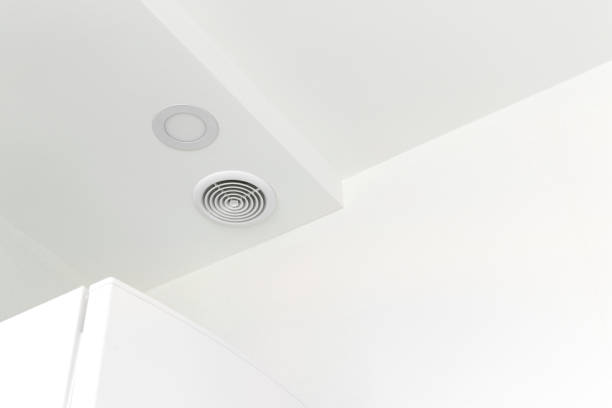
Wall-mounted fans are essential components of sanitary ware, particularly in the context of exhaust systems designed for effective air circulation and moisture control. Key considerations include:
Proper selection and placement enhance functionality, contributing to an effective sanitary environment.
Window fans serve as an effective solution for enhancing indoor air quality by facilitating direct ventilation to the outside environment. Their energy efficiency and airflow performance are critical for optimal usage. Consider the following table for comparison:
| Type | Noise Levels | Maintenance Routines |
|---|---|---|
| Standard Fan | Moderate | Monthly filter checks |
| Remote Control | Low | Biannual cleaning |
| High-Performance | Low | Monthly inspection |
Installation tips include ensuring a tight fit for maximum effectiveness.
Inline fans are a crucial component of modern sanitary ware systems, particularly for effective ventilation in spaces where traditional exhaust fans may be less suitable. These fans, installed within ductwork, enhance duct efficiency and air circulation while minimizing energy consumption and noise levels.
Selecting the right inline fan can significantly impact overall performance.
Mirror cabinets are essential components of modern sanitary ware, offering both functionality and aesthetic appeal. Their various types—including surface-mounted mirrors, recessed medicine cabinets, wall-mounted cabinets, and freestanding options—cater to diverse spatial and design requirements. Understanding the characteristics and applications of each type is crucial for optimizing bathroom space and enhancing user convenience.
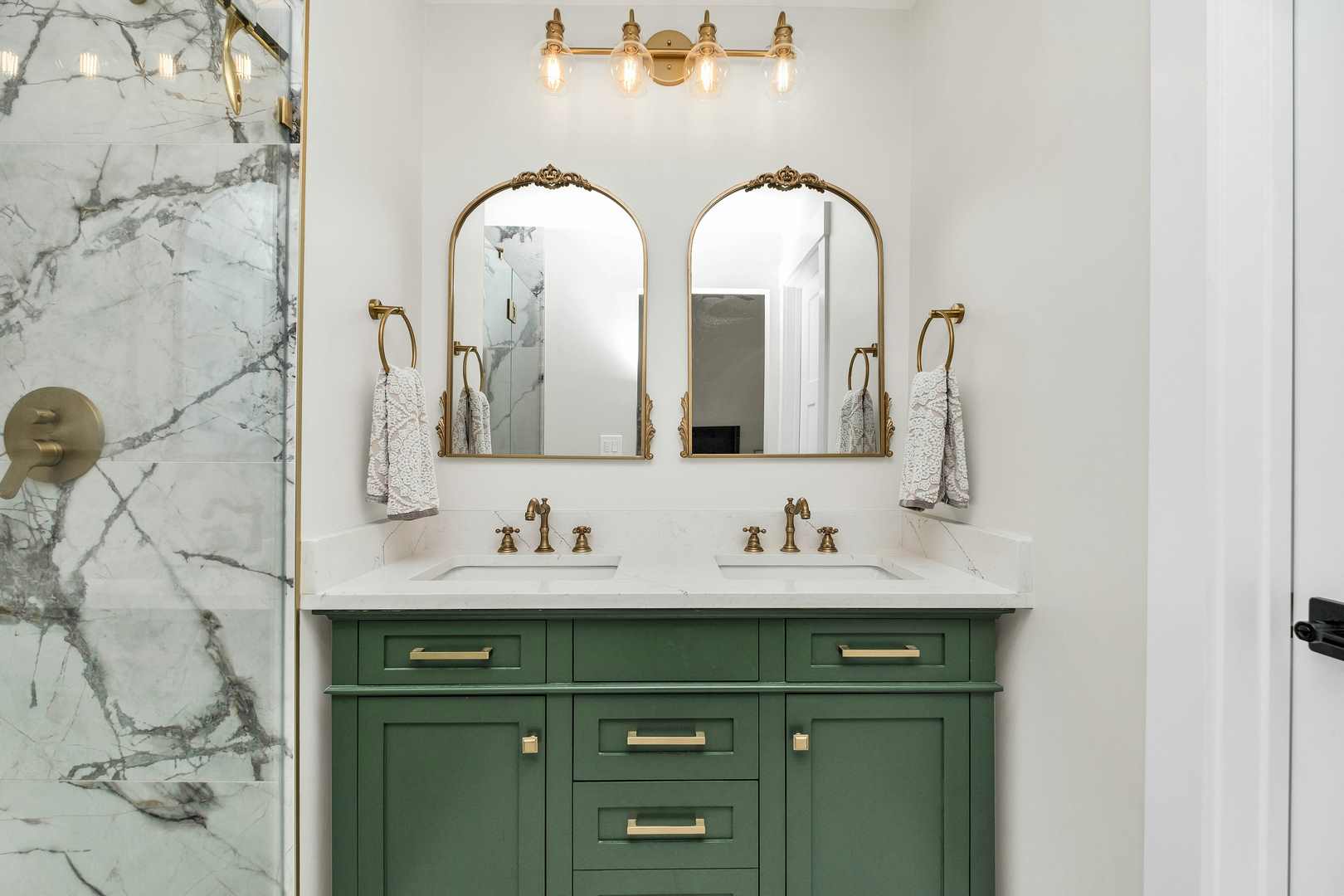
Surface-mounted mirrors represent a practical solution for enhancing both functionality and aesthetics in bathroom spaces. These mirrors adhere directly to the walls above the vanity, offering various benefits:
Consider installation tips for optimal placement to maximize both utility and overall bathroom aesthetics.
When considering space optimization in modern bathrooms, recessed medicine cabinets offer an effective solution, as they are designed to be installed within the wall cavity, providing both storage and a sleek appearance. Their integration with recessed lighting enhances visibility, while their mirror design contributes to bathroom organization. Additionally, proper installation considers wall insulation, ensuring both functionality and energy efficiency in storage solutions.
Wall-mounted cabinets represent a versatile addition to bathroom design, offering practical storage solutions while enhancing aesthetics. They are ideal for space optimization and come in various design styles. Key considerations include:
These features make wall-mounted cabinets essential in modern bathrooms.
Freestanding cabinets, often featuring an integrated mirror, are pivotal in optimizing bathroom functionality and aesthetics. Available in various design styles, they provide effective storage solutions while enhancing visual appeal. When considering installation tips, ensure proper leveling and secure anchoring. Maintenance advice includes regular cleaning and avoiding abrasive materials. Common material options range from wood to metal, ensuring durability and style compatibility.
Effective maintenance and cleaning involve utilizing appropriate cleaning products, implementing installation techniques that enhance durability, and addressing common issues. Regular maintenance tips ensure longevity, while understanding durability factors contributes to optimal performance and user satisfaction.
The average lifespan of sanitary ware products varies significantly, influenced by factors affecting durability such as material types, usage intensity, and maintenance practices. Common materials include ceramic and porcelain, with signs of replacement indicating cost-effective longevity.
Eco-friendly options abound, transforming the industry with sustainable materials, water-saving features, and biodegradable products. Many manufacturers offer recycling options and adhere to stringent certification standards, ensuring environmentally responsible choices for conscientious consumers in today's market.
Installing fixtures yourself can be feasible with proper installation tips and understanding tool requirements. However, consider DIY considerations and common mistakes that may arise, alongside a cost analysis to determine if hiring a professional is more beneficial.
Choosing the right fixtures for small bathrooms is vital; statistics show that 70% of homeowners prefer compact designs. Opt for space-saving solutions, select appropriate sanitary ware materials, and ensure color coordination aligns with your bathroom layout.
The selection of appropriate sanitary ware significantly influences both functionality and aesthetics within modern bathrooms. With an increasing focus on sustainability, it is noteworthy that the global sanitary ware market is projected to reach approximately $100 billion by 2027, driven by innovations in eco-friendly materials and water conservation technologies. This underscores the importance of informed decision-making in the procurement of sanitary ware, ensuring not only enhanced user experience but also alignment with contemporary environmental standards.